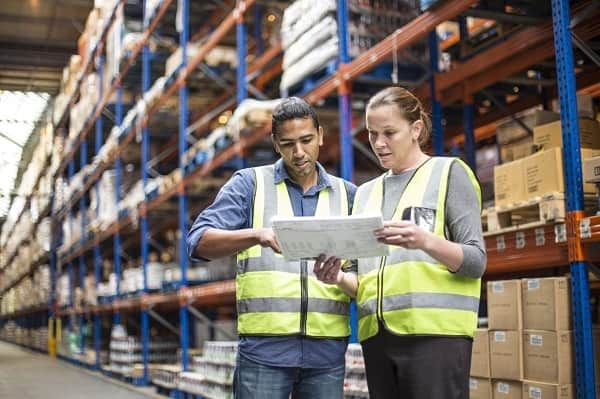Today, anyone can start a retail business with a couple of clicks on a laptop from a café. Companies with billions of dollars in valuation, like Shopify and BigCommerce, help to reduce the barriers of entry to the world of e-commerce. Manufacturing companies have the option of selling directly to consumers without the help of any retail middle men. Whether you are new in the retail space or an established player, what you cannot build with a click of a button is a strong brand or an efficient supply chain. These are the two factors that are essential for the long-term sustainability of any retail business, and achieving them requires implementing smart supply chain management tips and strategies.

A white paper published by DHL found that inefficient handling of supply chains causes high costs, wasted resources, and reduced agility. It is evident that supply chains are a cost driver for a retail business, and the efficiency with which supply chain is handled will determine whether the business will generate a sustainable profit or go under. Here are five supply chain management tips for the retail industry to bring in sustainable profits.
1. Implement automated ordering
Except for the rare brand like Supreme, which thrives on product scarcity, shoppers are not thrilled to encounter out-of-stock products. It hampers the brand image and leaves money on the table, which isn’t desirable for any business, especially in the retail business where alternatives are readily available for the consumer. Automated ordering alleviates the pressure on supply chain executives and also can take care of triggering replenishment orders automatically. Since every business is connected with technologies like ERP software, it is easier to implement such solutions and have the complete supply chain adapt readily to demand shifts.
2. Leverage big bata, analytics and optimization

Supply chains were driven by numbers and statistics for a long time. Quantifiable performance indicators were always considered key metrics by supply chain executives. With the technology available today, companies can track goods from raw materials to the final products, even after the purchase cycle is complete and the products are delivered to end consumers.
When dealing with this volume of data, tracking and analyzing data using an Excel spreadsheet is not realistic, as billions of data points can be created every minute. According to a report by the American Productivity and Quality Center (APQC), investing in data analytics is a top priority for supply chains.
With big data analysis techniques, companies have the power to harness unstructured data and extract useful information out of it. Data that once would have been discarded can now be put to use, revealing avenues for optimizing the supply chain at an unprecedented rate. 36% of supply chain executives say that analytics is the top instigator for optimizing their inventory to balance supply and demand. Modern big data analytics tools are user friendly and have strong visualization tools to assist users in gleaning actionable insights from raw data.
3. Automate warehouses and distribution centers
Warehousing is one of the important drivers of cost in the retail supply chain. There are plenty of opportunities to increase the profitability of a retail business through efficient warehousing. A lot of manpower, machines and systems are involved in the operation of a warehouse. Inefficiencies in any of these areas leads to an increased risk of errors and can create a bottleneck in the supply chain.
Order picking comprises 55% of the operational expenses of a warehouse, so reducing picking errors and improving order picking efficiency are obvious strategies when boosting profitability is the goal.
There are many levels of automation solutions available for warehouses. Amazon was a pioneer in warehouse automation, and today, there are many automation solutions within reach for any business. Collaborative mobile robots like Chuck by 6 River Systems are an intuitive and cost-efficient system that can integrate with your existing warehouse layout and offer faster ROI compared to traditional automation solutions, such as conveyor systems. For example, one leading 3PL implemented 6 River Systems’ solution within three months and achieved a full ROI within 18 months, with a 25% improvement on picking accuracy. In another case, a global retailer saw a 62% increase in pick rates within just three months after implementing 6 River Systems’ collaborative mobile robots solution while also reducing picking errors — at a fraction of the cost of traditional automation.
4. Develop a cohesive strategy

The supply chain of a retail organization cannot function as a stand-alone organization. It has to work side by side with marketing, sales, finance, operations and other departments. One of the most important facets of supply chain management is demand planning. The sales and marketing departments provide the data necessary to develop an accurate model for predicting future demand, which in turn impacts supply planning. Similarly, other business functions are mutually dependent on the supply chain function.
It’s not just the departments within the company, but vendors, suppliers and distributors are also key elements of a supply chain. The success of each entity is dependent on the strong relationships built with its partner organizations. Supply chain management must be a collaborative effort with all company departments and partners, so breaking down information and communication silos is a top priority for supply chain executives.
5. Consider 3PL solutions
Building an end-to-end logistics operation is cost-prohibitive and time-consuming, so many retailers turn to 3PLs. From behemoths like DHL and FedEx to regional 3PL players, there are many third-party logistics (3PL) providers that specialize in everything from warehousing and distribution to transport and last-mile delivery.
Leveraging a 3PL is a viable strategy to increase the profitability of your retail business. Many retailers find it more cost-effective to leverage 3PL solutions, particularly as their businesses grow and the retail logistics demands become too significant to manage. Utilizing the services of a 3PL allows retailers to focus their internal resources on the company’s core competencies.
These five supply chain management tips can help your retail organization achieve greater sustained profitability. By making smart investments in systems and solutions that can drive better decision-making and automate key business processes, retailers can boost productivity and efficiency for a healthier bottom line, both in the short- and long-term. To learn more about how collaborative mobile robots can help retailers address top fulfillment challenges, download our white paper, The Business Case for Collaborative Mobile Robotics.


